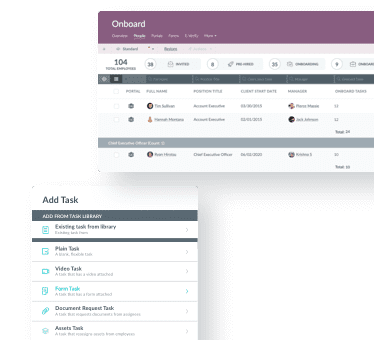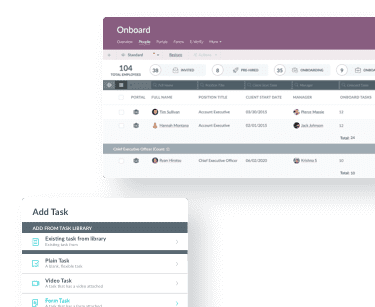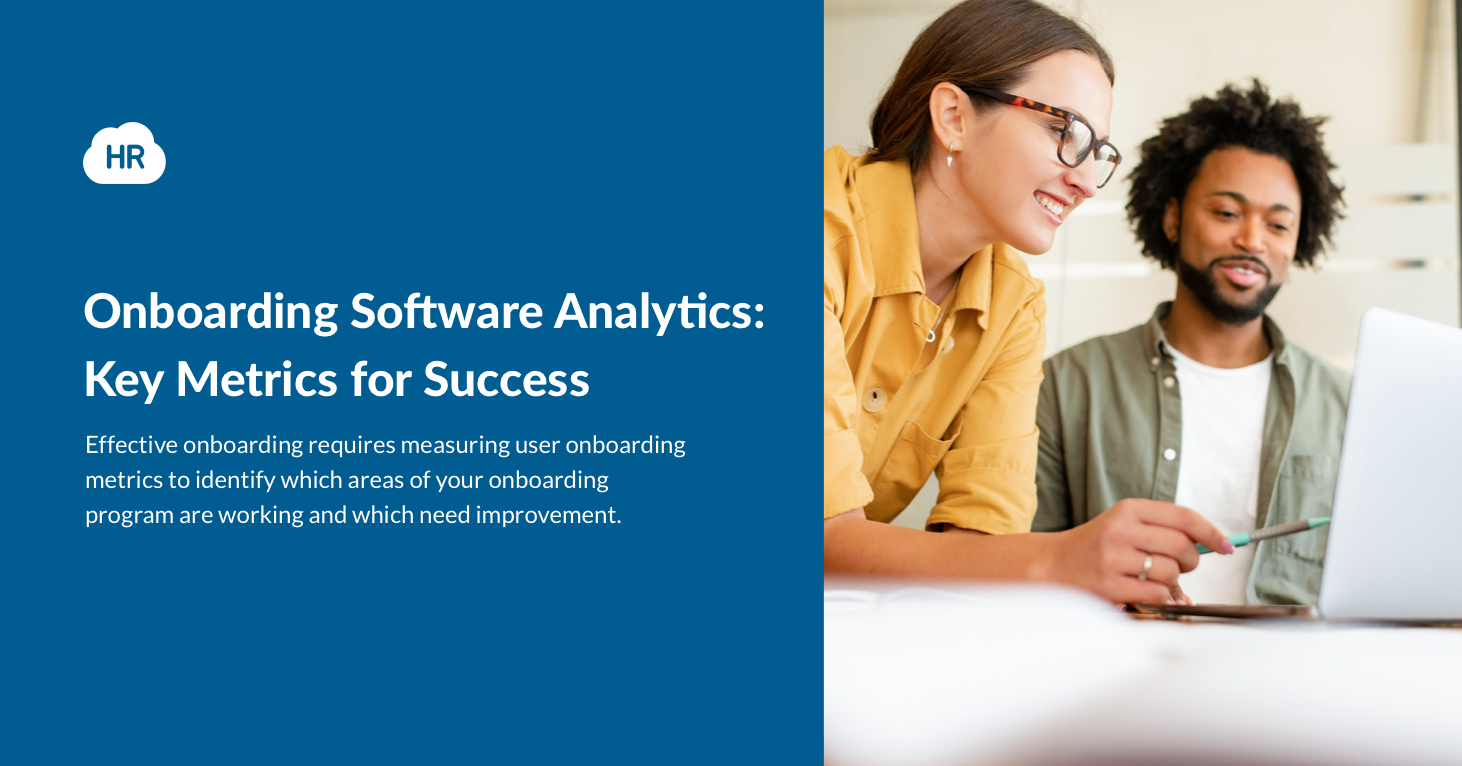Effective onboarding requires measuring user onboarding metrics to identify which areas of your onboarding program are working and which need improvement.
Focusing on relevant metrics gives you a clear picture of how users interact with your product from day one. Your ultimate goal is to minimize users' time to achieve their first success with your product. You can ensure your onboarding program is effective and dynamic through targeted measurement, adapting in real-time to meet user needs.

Photo by Mina Rad on Unsplash
Key Metrics for Onboarding Software Analytics
Effective onboarding software analytics can significantly improve your overall process with a focus on some key metrics that’ll help you better understand the experiences that new users go through and optimize your strategy.
Time-to-Productivity
The time-to-productivity metric measures how quickly new users become proficient with your software. This will be crucial for SaaS onboarding, as a shorter ratio can reduce churn rates and increase user satisfaction.
You should also track the average time to complete essential tasks and reach specific milestones. Identify any issues that slow down the onboarding process and work on actively improving these areas. This metric allows you factual adjustments to enhance user retention.
Completion Rates of Onboarding Modules
The onboarding completion rate is the percentage of users who begin and finish your onboarding modules. High completion rates often correlate with better user adoption and reduced drop-off rates.
Break down information into smaller, digestible modules to help users stay engaged and improve completion rates.
User Engagement with Onboarding Content
Metrics such as daily active users (DAU) and monthly active users (MAU) can be tested to provide more precise information about how often consumers engage with your content.
Utilise interactive tutorials, polls, and quizzes to encourage user participation. A greater engagement rate indicates that consumers find the content worthwhile and increases the likelihood that they will use your program consistently over time.
Retention and Churn Rates Post-Onboarding
Analyze these metrics to identify patterns or commonalities among retained users versus those who churn. Improving the onboarding process to address these insights can foster higher retention rates and user loyalty. If you consider metrics such as activation rate and feature adoption rate, you’ll also gain valuable context on how efficiently users integrate the software into their daily routines.
Tools and Techniques for Measuring Onboarding Success
You can now effectively evaluate your onboarding process with various tools and techniques that utilize data analytics, feedback mechanisms, A/B testing, and user behavior tracking.
Data Analytics Platforms
Data analytics platforms can help you measure metrics like time-to-productivity, offer acceptance rate, and retention rate.
Employing a range of onboarding metrics allows HR professionals to correlate how well new hires adapt and contribute to the organization. This provides a clearer picture of the onboarding stage efficiency and helps improve the onboarding experience.
Surveys and Feedback Mechanisms
Surveys are one of the most effective feedback mechanisms to gather detailed information about user onboarding strategies. Tools like Google Forms, SurveyMonkey, or specialized onboarding platforms can facilitate getting feedback at various touchpoints.
You can ask questions about the clarity of onboarding materials, satisfaction with the onboarding flow, and perceived support from HR. Continuous feedback collection enables timely adjustments and helps identify any pain points in the user onboarding process. This enhances overall employee engagement and satisfaction.
A/B Testing and User Behavior Tracking
Make two copies of the onboarding procedure you want, then divide new hires into each version at random. This way, you can compare results like productivity rate and retention rate.
Run tests on various elements like onboarding materials, training modules, and onboarding communication. For instance, SHRM suggests measuring how different training durations affect new hire performance.
Use specialized technologies to examine user behavior and pinpoint the onboarding funnel's drop-off spots. Examine data such as the amount of time spent on various onboarding activities, task completion rates, and the efficiency of different touchpoints.
an Onboarding Process
how HR Cloud makes onboarding easy.


Best Practices for Analyzing Onboarding Data
To optimize your onboarding processes, it's vital to have a clear strategy for analyzing data. For this, you must include setting specific KPIs, regularly monitor metrics, and use the insights to make valid decisions that improve customer satisfaction and retention.
Establishing Clear Goals and KPIs
Determine your view of success for your onboarding process with some common KPIs, including onboarding completion rate, time to first value, and net promoter score (NPS).
These metrics can help you measure customer satisfaction and identify areas for improvement. Establishing these benchmarks ensures that everyone on your team is aligned and working toward the same objectives, creating a focused approach to onboarding analytics.
Regular Monitoring and Analysis of Onboarding Metrics
Regularly track and analyze onboarding metrics such as completion rates, drop-off points, and the time customers spend on each step.
Utilize tools for intelligent document processing to gather and process data efficiently. Regular analysis allows you to quickly adapt and improve the onboarding journey, ensuring continuous improvement and customer success.
Using Data to Make Informed Decisions for Optimization
Use the data you collect to make informed decisions to optimize the onboarding process — for instance, if you notice a significant drop-off at a particular step, investigate and address the issue.
These factual decisions can significantly impact net revenue retention and PDF data extraction tools can help streamline the analysis process.
A Data-Driven Approach to Improvement
With a data-driven approach, you can make sure all improvements are based on actual user behavior rather than assumptions. Segment your users into cohorts to understand different paths in the customer journey and tailor your strategies accordingly.
Regularly update your knowledge base to address common issues observed during data analysis.
Case Studies: Successful Implementation of Onboarding Software Analytics
Implementing onboarding software analytics significantly enhances employee engagement and reduces time-to-productivity.
Sked Social
Social media management company Sked Social used to have quite an issue when it came to conversions. The other parts of their sales funnel were doing just fine — but for some reason, the onboarding stage simply wasn’t up to par.
By analyzing the metrics at hand, Sked Social determined that most of their would-be customers abandoned the onboarding process after starting it. After careful deliberation, they implemented a two-pronged solution — customers could either request a one-on-one walkthrough for onboarding or opt for a checklist system. Sked Social managed to triple its conversions by streamlining the onboarding process in this way.
WGBH Educational Foundation
A nonprofit public media company, WGBH found itself in hot water when it comes to onboarding. The company’s Member Services and Operations division had no best practices, clear policies, or roadmaps in place — and as a result, onboarding new employees was quite often unsuccessful. Feedback from employees highlighted this area as the main issue.
This was unsustainable - particularly as the Member Services and Operations division handles and manages all contacts, donation processing, and donor data updates. With the help of WalkMe, a concrete plan was put in place that allowed new hires to get acquainted with the platform of choice — in this case, Salesforce, much quicker. As for results — the company’s onboarding completion rate rose to 48%.
In both cases, analytics here are essential for enhancing engagement and accelerating productivity.
Future Trends in Onboarding Software Analytics
Continuous Monitoring and Optimization Based on Real-Time Data Feedback
Real-time data feedback allows constant evaluation and improvement of onboarding processes. This approach ensures that errors and inefficiencies are identified immediately, leading to quick resolutions.
SaaS companies can leverage these insights to boost the productivity of new hires, adapt training modules, and stay ahead of competitors by offering superior onboarding experiences. Continuous monitoring also helps in identifying trends that may influence the business model, making it easier to make strategic decisions.
Ensuring Security and Compliance with Emerging Threats
As new threats emerge, ensuring security and compliance remains a priority. Onboarding platforms must adopt PCI DSS Compliance to safeguard sensitive data, especially for subscription-based businesses handling financial information.
The importance of compliance in managing procedures can't be overstated, as it builds trust and meets regulatory standards. Hosting solutions offering PCI-compliant hosting can provide additional security layers, protecting the company and its employees.
Predictive Analytics for Personalized Onboarding Experiences
Predictive analytics allows you to use past data to forecast future needs to provide personalized onboarding experiences. With this, you can enable your company to tailor training programs to individual needs, which in turn increases engagement and retention rates.
Such personalization will add value to your product and keep upsell opportunities open, as employees will be more likely to appreciate additional features.
You can also design specific onboarding paths for different roles, making sure each employee receives relevant and effective training.
Integration of AI and Machine Learning in Analyzing Onboarding Data
AI and machine learning can identify patterns and anomalies that human analysis might miss, providing deeper insights. AI-driven analytics offer customized recommendations for improving onboarding processes, making them more efficient and targeted.

Photo by Tima Miroshnichenko on Pexels
Conclusion
For your best chance of success, use onboarding software analytics to improve user experiences and ensure successful integration — focus on actionable data to make informed decisions.
Recap of the importance of onboarding software analytics
Onboarding software analytics offers critical insights that pave the way for successful user integration. With these metrics, you’ll identify areas of improvement and make the onboarding process a more optimized experience.
Track key performance indicators — onboarding completion rates and user engagement — highlighting where users struggle or drop off. This data is key to refining the onboarding flow and enhancing the satisfaction of users.
Encouragement for businesses to prioritize data-driven decisions in their onboarding processes
Prioritize data-driven decisions to improve and optimize your onboarding process. Analytics will also enable your team to adjust based on real user experiences and not assumptions.
Implementing clear metrics like time-to-productivity and feedback on training effectiveness ensures your onboarding practices are efficient. This strategic approach minimizes onboarding issues and enhances the overall user experience.
Invest in tools and methodologies that provide detailed analytics—this offers a more insightful and responsive onboarding approach, paving the way for higher retention rates and user success.
About Author:
This article is written by a marketing team member at HR Cloud. HR Cloud is a leading provider of proven HR solutions, including recruiting, onboarding, employee communications & engagement, and rewards & recognition. Our user-friendly software increases employee productivity, delivers time and cost savings, and minimizes compliance risk.
Keep Reading
Remote Onboarding Done Right: A Step-by-Step Guide for HR Teams
When a new hire walks into your office, you smile, shake hands, and show them around. But
Importance of Onboarding: Purpose, Benefits, and What It Means for Your Workplace
Think about the last time you joined a new team. You had questions, maybe even doubts.

